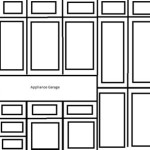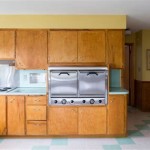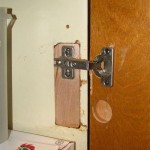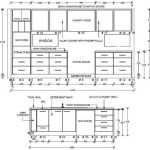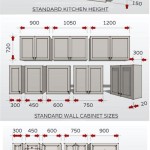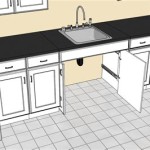How Much Does A New Modern Kitchen Cost?
Embarking on a modern kitchen remodeling project is a significant undertaking, often involving substantial investment. Understanding the potential costs involved is crucial for effective budgeting and planning. The expense of a new modern kitchen can vary widely, influenced by factors such as the size of the kitchen, the quality of materials selected, the complexity of the design, and the labor costs in a specific geographical location. Therefore, a detailed examination of the various components that contribute to the overall cost is essential to accurately estimate the investment required.
The term "modern kitchen" encompasses a broad range of design styles, all generally characterized by clean lines, minimalist aesthetics, and functional layouts. This could range from sleek, handle-less cabinetry and integrated appliances to open shelving and industrial-inspired accents. The level of sophistication and the specific design choices within this modern framework will significantly affect the overall budget. For instance, opting for custom-designed cabinetry with premium finishes will inevitably increase costs compared to selecting readily available, mass-produced options.
This article will delve into the various cost factors associated with a modern kitchen renovation, providing a comprehensive overview to assist homeowners in developing a realistic budget for their project.
Cabinetry Costs: The Foundation of the Budget
Cabinetry typically represents the largest single expense in a kitchen renovation. The cost is heavily influenced by the type of cabinetry chosen: stock, semi-custom, or custom. Stock cabinets are pre-made in standard sizes and styles, offering the most affordable option. However, their limited customization options might not perfectly suit the space or desired design aesthetic. Semi-custom cabinets provide a balance between affordability and customization, offering a range of modifications to stock sizes, finishes, and door styles. Custom cabinets are built to exact specifications, allowing for complete design freedom and optimal utilization of space. This option, while the most expensive, provides unparalleled flexibility and the opportunity to create a truly unique and personalized kitchen.
Materials also significantly impact cabinetry costs. Solid wood cabinets, particularly those made from hardwoods like maple, cherry, or oak, are generally the most expensive. Wood veneer cabinets, which feature a thin layer of wood over a less expensive core material, offer a more affordable alternative while still providing the appearance of solid wood. Laminate cabinets, made from synthetic materials, are the most budget-friendly option and are available in a wide range of colors and finishes. The cost of hardware, such as knobs, pulls, hinges, and drawer slides, should also be considered. High-end hardware can significantly increase the overall cabinet expenditure.
Installation charges for cabinetry can vary depending on the complexity of the installation and the experience of the installer. Complex layouts with intricate details will naturally require more labor and expertise, thus increasing the installation costs. It's advisable to obtain multiple quotes from different installers to ensure a competitive price and to assess their credentials and experience.
Beyond the base cost of the cabinets themselves, ancillary cabinet-related costs can add to the overall figure. Features like pull-out shelves, soft-close hinges, and integrated lighting can enhance functionality and aesthetics but will increase the total expense. The removal and disposal of existing cabinets can also incur additional charges. Consider the long-term value and functionality of the various cabinet options when making budgeting decisions.
Countertop Costs: Aesthetics and Durability
Countertops are another significant cost factor in a modern kitchen renovation. The price of countertops is primarily determined by the material chosen. Granite and quartz are popular choices due to their durability, aesthetic appeal, and resistance to heat and stains. However, these materials can be relatively expensive. Marble countertops offer a luxurious look but require more maintenance due to their porous nature and susceptibility to staining and etching. Butcher block countertops provide a warm and rustic touch but require regular oiling to prevent cracking and warping.
Solid surface countertops, such as Corian, are seamless and non-porous, making them easy to clean and maintain. They are also available in a wide range of colors and patterns. Laminate countertops are the most affordable option and offer a variety of looks, but they are less durable and more prone to scratching and damage. Concrete countertops offer a unique, industrial aesthetic but require sealing to prevent staining and cracking.
The size and complexity of the countertop design will also influence the cost. Larger countertops and those with intricate shapes or cutouts for sinks and appliances will require more material and labor, increasing the overall expense. The edge profile of the countertop can also affect the price; more elaborate edge profiles will typically cost more than simple, straight edges.
Installation costs for countertops vary depending on the material and the complexity of the installation. Granite and quartz countertops, for example, require professional installation due to their weight and the precision required for cutting and fitting. It is crucial to hire experienced professionals to ensure a proper and secure installation, preventing potential damage and ensuring the longevity of the countertop.
Appliance Costs: Functionality and Efficiency
Appliances are essential components of any kitchen, and the cost of new appliances can significantly impact the overall budget. Modern kitchens often feature integrated appliances, which are designed to seamlessly blend with the cabinetry, creating a sleek and streamlined look. Integrated appliances, such as refrigerators, dishwashers, and ovens, tend to be more expensive than standard appliances.
The type and brand of appliances chosen will greatly influence the cost. High-end brands with advanced features and innovative technologies command a premium price. Energy-efficient appliances, while initially more expensive, can save money on utility bills over the long term. Consider the energy efficiency ratings and potential long-term cost savings when making appliance selections.
The number of appliances included in the renovation will also affect the overall cost. A typical kitchen appliance package includes a refrigerator, oven/range, dishwasher, and microwave. Additional appliances, such as wine refrigerators, warming drawers, or built-in coffee makers, will further increase the budget.
Installation costs for appliances can vary depending on the type of appliance and the complexity of the installation. Some appliances, such as refrigerators and dishwashers, may require plumbing or electrical connections, which can add to the installation costs. It is advisable to hire qualified technicians for appliance installation to ensure proper functionality and safety. The removal and disposal of old appliances should also be factored into the budget.
Modern appliances often include smart features that can be controlled remotely and offer enhanced functionality. While these features can be appealing, they often come at a higher price point. Weigh the benefits of these features against the added cost when making appliance decisions.
Beyond the major appliances, consider the cost of smaller appliances like toasters, blenders, and coffee makers. While these items may seem insignificant in the grand scheme of the renovation, their cumulative cost can add up. Setting a budget for these smaller appliances is recommended.
Ultimately, the cost of creating a new modern kitchen is a multifaceted endeavor. The choices made across cabinetry, countertops, and appliances—as well as the consideration of lighting, plumbing, flooring, and labor costs—all contribute to the final price tag. Thorough planning, careful material selection, and securing multiple quotes are key strategies for managing expenses and achieving a kitchen that aligns with both design aspirations and budgetary constraints. By understanding the various cost drivers involved, homeowners can navigate the renovation process with confidence and create a modern kitchen that meets their needs and enhances their homes.

How Much Does A New Kitchen Cost In 2024 Checkatrade

How Much Does A New Kitchen Cost In 2024 Checkatrade

Kitchen Installation Cost 2024 Data

How Much Does A New Kitchen Cost Bristol Fitter

How Much Does It Cost To Hire A Kitchen Designer

How Much Does A Kitchen Remodel Cost 2024 Average

How Much Does A Kitchen Remodel Cost 2024 Average

How Much Does Kitchen Design Cost In 2024 Checkatrade

Kitchen Remodel Costs In 2024 Including Labor Block Guides

How Much Does A Kitchen Remodel Cost Forbes Home
Related Posts

